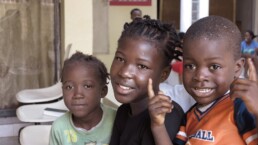Refugee Claimants Do Not Jump the Queue, nor Are They Guaranteed to Stay in Canada
The Canadian Government recently announced new measures to handle asylum seekers crossing at irregular borders. Public Safety Minister Ralph Goodale warned that this method of entering Canada is “no free ticket to Canada,” and “all Canadian laws will be enforced” along with Canada’s international obligations.
These messages come as more asylum seekers are crossing into Canada at irregular borders. With the removal of Temporary Protected Status for many in the U.S. and the spread of misinformation about asylum claims in Canada, this year’s influx of irregular border crossers is already showing signs of being greater than 2017’s.
Furthermore, the Canadian Government is attempting to dispel myths about claiming asylum, including the concern that these asylum seekers are queue jumping. Claimants might be more successful working with a refugee lawyer through official channels.
No Free Ticket
In Canada’s immigration system, asylum seekers are part of a separate category that doesn’t affect other immigration categories. Their refugee claim will be processed and if referred to the Immigration and Refugee Board (IRB), then adjudicators will decide whether to accept or deny their claim.
Immigration, Refugees and Citizenship Canada (IRCC) handles other immigration categories, including Family Class, economic immigration, and refugees resettled from overseas.
Since the IRB and IRCC operate independently, the asylum seekers crossing at irregular borders do not “jump the queue” for immigrants and the refugees resettling through the IRCC.
The asylum claims category is also further separated into three streams:
- Asylum claims made at official Canada-U.S. land border ports of entry;
- Asylum claims made at Immigration, Refugees and Citizenship Canada or a Canada Border Services Agency Office inland; and
- Asylum claims made by those who have irregularly entered Canada between official ports of entry.
After entering Canada at irregular borders, asylum seekers must go through the regular refugee claim assessment process, which is not trivial and has no guarantees.
The Safe Third Country Agreement
Under the Safe Third Country Agreement between Canada and the U.S., refugee claimants must request refugee protection in the first safe country they arrive in unless they qualify for an exception to this agreement.
However, the Safe Third Country Agreement does not apply at irregular border crossings. As such, many refugee claimants have crossed the United States border in this manner with the express goal of making an asylum claim in Canada’s borders.
Detention and Screening
Security personnel arrest and detain asylum seekers attempting to make refugee claims at an irregular border. The RCMP intercepts these individuals as standard protocol, who then undergo rigorous background and security screenings, including:
- Criminal history checks,
- Security checks,
- Health checks, and
- Comprehensive questioning.
Eligibility Screenings
The RCMP or immigration officers then determine if an asylum claim can even be made, specifically whether a claim and claimant meet refugee eligibility requirements.
If they are deemed ineligible to make an asylum claim, they:
- May not file a refugee claim;
- May be allowed a risk assessment; and, if not
- Must leave Canada or be removed.
Asylum Claim Processing
Independent decision makers at the IRB process these claims, and decide whether to accept or refuse them.
If refused, the asylum seeker must leave Canada or be removed. But if accepted, the claimant receives protected person status and may apply for permanent resident status.
While many are concerned about the influx of asylum seekers entering Canada, the government is warning potential border crossers that they must meet specific requirements to have their refugee claims accepted.
Given the complexity of the process and the legal requirements that must be met, working with a refugee lawyer is a better avenue toward obtaining refugee status.
Share this article
Arghavan Gerami
Arghavan Gerami is the Founder and Senior Counsel at Gerami Law Professional Corporation ('PC'), a full-service immigration law firm in Ottawa, Ontario. Since 2011, Ms. Gerami has focused her practice on immigration and refugee litigation. Prior to that, Ms. Gerami worked at the Ministry of Attorney General and the Department of Justice and had the privilege of serving the Honourable Mr. Justice M. Evans at the Federal Court of Appeal on immigration and administrative law appeals. Ms. Gerami contributes to the Immigration Law Section of the Canadian Bar Association, the Canadian Association of Refugee Lawyers, and the United Nations High Commissioner for Refugees. Ms. Gerami has also published numerous journal articles and presented at various immigration and refugee law conferences and events across Canada.

